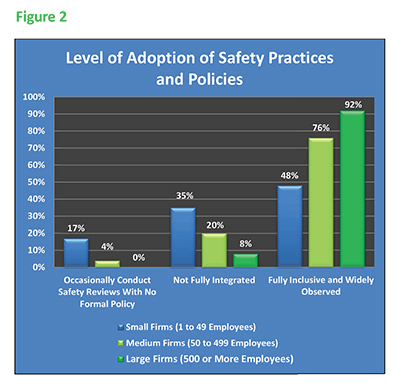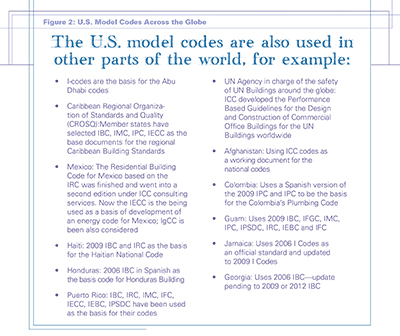Categories And Definitions of Weather
Barriers, Vapor Retarders, and Finishes
As we begin our new
column—Insulation Finishes—we wanted to start by explaining the categories and
product
characteristics of weather barriers, vapor retarders, and finishes that we will
be examining each month.
This month’s column will look at Metal Rolls and Sheets.
Most mechanical
insulation systems require a covering or finish material. The primary reason is
to protect the insulation from damage: weather, mechanical abuse, water vapor
condensation, chemical attack, and fire are all potential sources of damage.
Additionally, appearance coverings are utilized to provide the desired
aesthetics. Depending on the location and application, various terms have been
used to describe these functions:
- Appearance
Coverings are materials
used over insulation systems to provide the desired color or appearance. - Condensate
Barriers (sometimes
called moisture retarders) are materials, normally used as an inner lining for
metal weather barriers, which will bar the condensate that tends to form on the
inner surface of the metal jacket from coming into contact with the metal
portion of the jacket. - Hygienic
Coverings are materials
used to provide a smooth, cleanable surface for use in food processing,
beverage, or pharmaceutical facilities. - Mechanical Abuse
Coverings are materials
that protect the insulation from damage by personnel, machinery, etc. - Vapor Retarders are materials that retard the passage
of water vapor into the insulation. - Weather
Barriers are materials that, when installed on the outer surface of thermal
insulation, protect the insulation from various weather threats such as rain,
snow, sleet, dew, wind, solar radiation, atmospheric contamination, and
mechanical damage.
These functions are
performed by a number of different materials or material systems. In many
cases, a single material can provide multiple functions (for example, a
metallic jacketing can often serve as protection from both the weather and from
mechanical abuse).
There is some
inconsistency in the nomenclature used for these materials. The terms
jacketing, lagging, and facings are sometimes used interchangeably to describe
the outer covering of an insulation system.
Adding to the
confusion, the term vapor retarder has evolved. Historically, the term vapor
barrier was used, but this has been generally replaced with the term vapor
retarder in recognition of the fact that an absolute barrier to water vapor
flow is difficult if not impossible to achieve. There is also movement toward
the use of the term vapor diffusion retarder (VDR) to generically describe
these materials.
Physical
Properties of Weather Barriers,
Vapor Retarders, and Finishes
Depending on the
application, weather barriers, vapor retarders, and finishes are subject to
certain
requirements that must be considered when selecting a system:
Internal Mechanical
Forces—Expansion and
contraction of the pipe or vessel must be considered because the resulting
forces are transferred to the external surface of the weather barrier. An
ability to slide, elongate, or contract must be accommodated.
External Mechanical
Forces—If a pipe,
vessel, or a specific area thereof is subject to mechanical abuse (e.g.
tools being dropped, abrasion from wind-driven sand, or personnel walking on
the system) then these
need to be considered in the design. This may impact the insulation type used,
as well as the weather barrier jacketing type.
Chemical Resistance—Some industrial environments may have
airborne or spilled corrosive agents that accumulate on the weather barrier and
cause chemical attack of the pipe or vessel jacketing. Elements that
create corrosive issues must be well understood and accounted for. If designing
insulation for a coastal facility, make sure to account for chloride attack.
Galvanic
Corrosion—If a system is using one metal in contact with a different metal, there
is a potential for galvanic corrosion. Similarly, water can act as an
electrolyte and galvanic corrosion can occur due to the different potential of
the pipe and vessel, and the metal jacketing.
Insulation
Corrosivity—Some
insulation materials can cause metal jacket corrosion, and other insulation
materials can chemically attack some polymer films. Both of these situations
shorten service life.
Thermal Degradation—Hot systems are typically designed so
that the surface temperature of the insulation and
jacketing material do not exceed 140°F. The long-term effect of 140°F on the
jacketing material must be considered. Additionally, there may be solar
radiation load and perhaps parallel heat loss from an adjacent pipe. This is a
critical design consideration, particularly if a non-metal jacket is being considered.
Installation and
Application Logistics—It is quite common for an insulation contractor to install more
insulation in a day than can be protected with jacket. If it rains, the exposed
portion of insulation gets saturated, and the next day, the jacket is installed
over the wet insulation. This creates an obvious potential corrosion issue
before the installation is operational. If this occurs, it must be corrected
immediately. It should also be understood that the size, shape, and adjacent
space available to work may dictate the type of weather barrier specified. It
is possible that constraints dictate that a less-than-desirable weather barrier
option must be utilized. If this is the case, the maintenance schedule must recognize
and plan for accommodating this option.
Maintainability—The importance of a maintenance and
inspection plan in achieving the service life expected of
the design cannot be overemphasized.
The physical properties of importance to
jacketings and facings are
summarized below:
Water Vapor
Permeance is defined
by ASTM C168 as the time rate of water vapor transmission through unit area of
flat material or construction induced by unit vapor pressure difference between
2 specific surfaces, under specified temperature and humidity conditions. Water
vapor permeance is measured in IP system in units of perm. For facing
materials, water vapor permeance is commonly expressed in units of perms. In
below-ambient applications, it is important to minimize the rate of water vapor
flow to the cold surface. This is normally accomplished by using vapor
retarders with low permeance, insulation materials with low permeability, or
both in combination. In above-ambient applications, it is often desirable to
have a “breather” facing that allows water vapor to escape without condensing. In
either case, it is important to know the permeance of the facing materials.
ASTM Test Method E96 is used to measure the water vapor transmission properties
of insulation materials.
Emittance of a surface is the ratio of the
radiant flux emitted by a specimen to that emitted by a blackbody at the same
temperature. For personnel protection and condensation control applications, a
high emittance is desirable. For minimizing heat flow, a lower emittance
surface is generally desirable.
Surface Burning
Characteristics are
generally determined by ASTM Standard Test Method E84, which measures the
relative burning behavior of materials by observing the horizontal flame spread
along the specimen surface. Flame spread and smoke developed index are reported.
However, there is not necessarily a relationship between
these 2 measurements. Many other fire tests are also used to characterize these
materials. For example, textile products utilize ASTM D6413 (Standard Test
Method for Flame Resistance of Textiles) and NFPA 701 (Standard Methods of Fire
Tests for Flame Propagation of Textiles and Films).
Tensile Strength of facings and jacketing materials
is a measure of the damage resistance of the facing. For facing materials,
tensile strength is typically measured per ASTM D828 or D882 with results
reported in units of lbs/in of width. ASTM D828 is designed for paper, while
ASTM D882 is designed for thin plastic sheeting. For woven fabrics, ASTM D5035
is the predominate test. Some specifications require testing in both machine
direction and cross machine direction.
Dimensional
Stability at
elevated temperatures is measured in percentages using ASTM Standard Test
Method D1204. Specimens are exposed to temperatures of 150°F for 24 hours.
Fungi Resistance of insulation facing materials is
typically evaluated using ASTM C1338, which
calls for inoculating specimens with 5 different strains of fungi spores
and then incubating them at 86°F, 95% relative humidity (rh) for
28 days. The growth is then evaluated relative to a comparative material to assess
the fungi resistance of the sample.
Thermal Integrity of the facing materials must match
the application requirement. Flexible vapor-retarder facings are generally
evaluated per ASTM C1263, which subjects specimens to temperature extremes of
-20°F to +150°F, bends the specimens around a 1 in. OD mandrel, and then
evaluates for any cracking or delamination.
Bursting Strength is a measure of the force required
to rupture the facing in psi. It is measured in accordance with ASTM D774 (up
to 200 psi) or ASTM D3786 (up to 500 psi).







